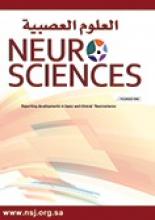Abstract
The term febrile convulsion is not a diagnostic entity. It simply describes any seizure that occurs in response to a febrile stimulus. It usually occurs between the age of 3 months and 5 years and occurs in 2-4% of young children. The typical febrile convulsion is a generalized tonic clonic seizure lasting between a few seconds and 15 minutes, followed by a period of drowsiness. Febrile seizures tend to occur in families, although the exact mode of inheritance is not known. Viruses are the most common cause of illness in children admitted to the hospital with a first febrile seizure. Routine laboratory studies are not indicated for patients who have febrile seizures and should be performed only as part of the evaluation for a source of fever. Prognosis is generally good. Only a small minority of children develop epilepsy or recurrent non-febrile seizures. Children with febrile seizures are at no greater risk of intellectual impairments than their peers. Treatment to prevent recurrence has not been shown to prevent later development of epilepsy.
- Copyright: © Neurosciences
Neurosciences is an Open Access journal and articles published are distributed under the terms of the Creative Commons Attribution-NonCommercial License (CC BY-NC). Readers may copy, distribute, and display the work for non-commercial purposes with the proper citation of the original work.






